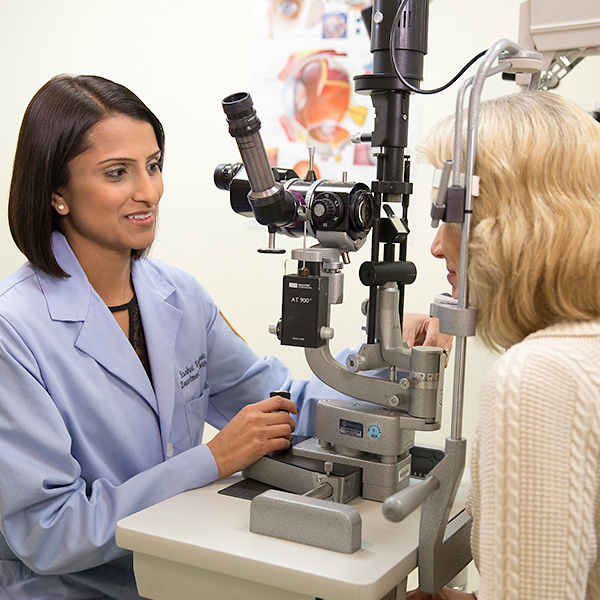Retinal Detachment
Overview and Facts about Retinal Detachment
The retina is a slim, light-sensitive layer of tissue that lines the inside of your eye and sends messages to your brain through the optic nerve, allowing you to see.
When the retina detaches or moves away from the eye, it is an emergency situation that calls for immediate medical attention in order to save or restore your vision.
There are three types of retinal detachment:
- Exudative retinal detachment occurs after an injury or because of diseases that cause inflammation.
- Rhegmatogenous retinal detachment, the most common of the three types of detachment, occurs when a tear in the retina allows fluid to accumulate and interfere with retinal nourishment.
- Tractional retinal detachment occurs when scar tissue or other damage causes the retina to contract away from the retinal pigment epithelium (RPE).
Signs and Symptoms of Retinal Detachment
Signs and symptoms are similar across the three types of retinal detachment. If retinal detachment occurs, you will not feel pain unless the retina has detached due to a traumatic injury.
Some signs and symptoms of retinal detachment include:
- Shadowy vision despite normal lighting
- A slow decrease in peripheral vision, or a narrowing of your visual scope
- Increased floaters in your vision (dust-like particles that appear to swim into view)
- Changes in vision that might include blurriness and light flashes
Causes and Risk Factors of Retinal Detachment
Many factors, including eye health, eye injury and eye disease, influence the risk of retinal detachment.
Risk factors for retinal detachment include:
- Eye diseases such as retinoschisis, degenerative myopia, and lattice degeneration
- Eye injury
- Eye surgery
- Family history
- Nearsightedness
- Previous retinal detachment
Tests and Diagnosis of Retinal Detachment
If you suspect that you’ve experienced retinal detachment, your doctor can perform an eye examination and look for tears in your retina. They might also order an ultrasound to get a closer look or use an ophthalmoscope to examine the back of your eye. These are noninvasive techniques.
Treatment and Care for Retinal Detachment
Treatment for retinal detachment is always surgery. The severity of the retinal detachment (among other factors) determines the type of surgery performed.
Surgical treatments include:
- Pneumatic retinopexy — a procedure during which your doctor injects an air bubble into the center of the eye to push the retina back into place and stop fluid from pooling behind the eye — coupled with tear repair
- Scleral buckling, when your doctor sews a small piece of silicone over the sclera of your eye to reduce retinal pull
- Vitrectomy, or removing tissue pulling on the retina and injecting air into the eye to help flatten the retina
Unless there are complications, most retinal detachment surgeries are outpatient, and your doctor will provide post-operative instructions for home care.

Request an Appointment
Whether you are seeking routine eye care or have a specific vision issue, our team treats a wide range of eye diseases and conditions, including cataracts, glaucoma, macular degeneration and strabismus. Schedule an appointment today.
Schedule a Telehealth Appointment
